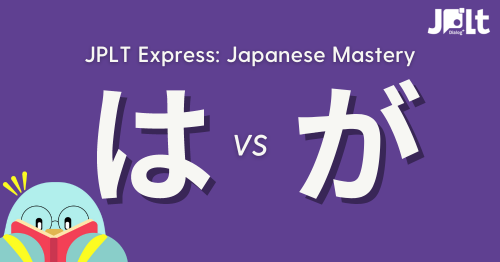[Japanese Learning]
I don’t understand how to use “は” (wa) and “が” (ga).
“When I say, ‘彼は先生です。’ (He is a teacher) and ‘彼が先生です。’ (He is a teacher), they seem the same to me…” “In a certain situation, when I said, ‘私が学生です。’ (I am a student), I was told that’s not the right usage…” “Please explain clearly what the difference is between ‘は’ (wa) and ‘が’ (ga)!”
For learners of Japanese, the difference between “は” (wa) and “が” (ga) is one of the challenging points.
Below, Eri-san from JPLT Online Japanese Language School explains the differences and usages in detail with specific examples.
■ Usage of “は” (wa)
“は” (wa) is a topic marker particle that indicates the subject of the sentence. It is similar to “as for” or “regarding” in English.
Examples:
When indicating the topic:
- 私は学生です (Watashi wa gakusei desu): As for me, I am a student.
- 今日は晴れです (Kyou wa hare desu): As for today, it is sunny.
When indicating a contrast:
- 猫は好きですが、犬は嫌いです (Neko wa suki desu ga, inu wa kirai desu): I like cats, but I dislike dogs.
- 日本語は難しいですが、楽しいです (Nihongo wa muzukashii desu ga, tanoshii desu): Japanese is difficult, but it is fun.
■ Usage of “が” (ga)
“が” (ga) is a subject marker particle used to emphasize the subject of the sentence. It is similar to a “subject marker” in English.
Examples:
When introducing new information:
- 誰が来ましたか? (Dare ga kimashita ka?): Who came?
- 彼が先生です (Kare ga sensei desu): He is the teacher.
When emphasizing a specific thing:
- あの人が好きです (Ano hito ga suki desu): I like that person.
- この本が面白いです (Kono hon ga omoshiroi desu): This book is interesting.
■ Specific comparison
Emphasizing the difference between “は” (wa) and “が” (ga):
- 私は学生です (Watashi wa gakusei desu): I am a student. → The topic is “I.”
- 私が学生です (Watashi ga gakusei desu): I am the student. → Emphasizing that “I” am the student, contrasting with others.
In a question and answer context:
- 誰が来ましたか? (Dare ga kimashita ka?): Who came? → Asking for new information.
- 田中さんが来ました (Tanaka-san ga kimashita): Tanaka-san came. → Providing new information.
In a contrast context:
- 私はりんごが好きです (Watashi wa ringo ga suki desu): As for me, I like apples. → Including a contrast with others.
- 私はりんごは好きですが、バナナは好きではありません (Watashi wa ringo wa suki desu ga, banana wa suki dewa arimasen): I like apples, but I don’t like bananas. → Contrasting apples and bananas.
■ Summary
How to use “は” (wa) and “が” (ga) properly.
“は” (wa) is used to indicate the topic, focusing on the subject of the conversation. On the other hand, “が” (ga) emphasizes the subject, presenting new information or specific facts. Understanding these differences will help you use more natural and accurate Japanese. It is important to use them appropriately depending on the context and situation in Japanese sentences.
JPLT Online Japanese Language School offers effective learning methods through individual and group lessons. The teachers explain in detail why you can’t say “多い人” (ooi hito) or “多い雨” (ooi ame). We support improving your vocabulary and practical conversation practice so that you can speak Japanese naturally.





